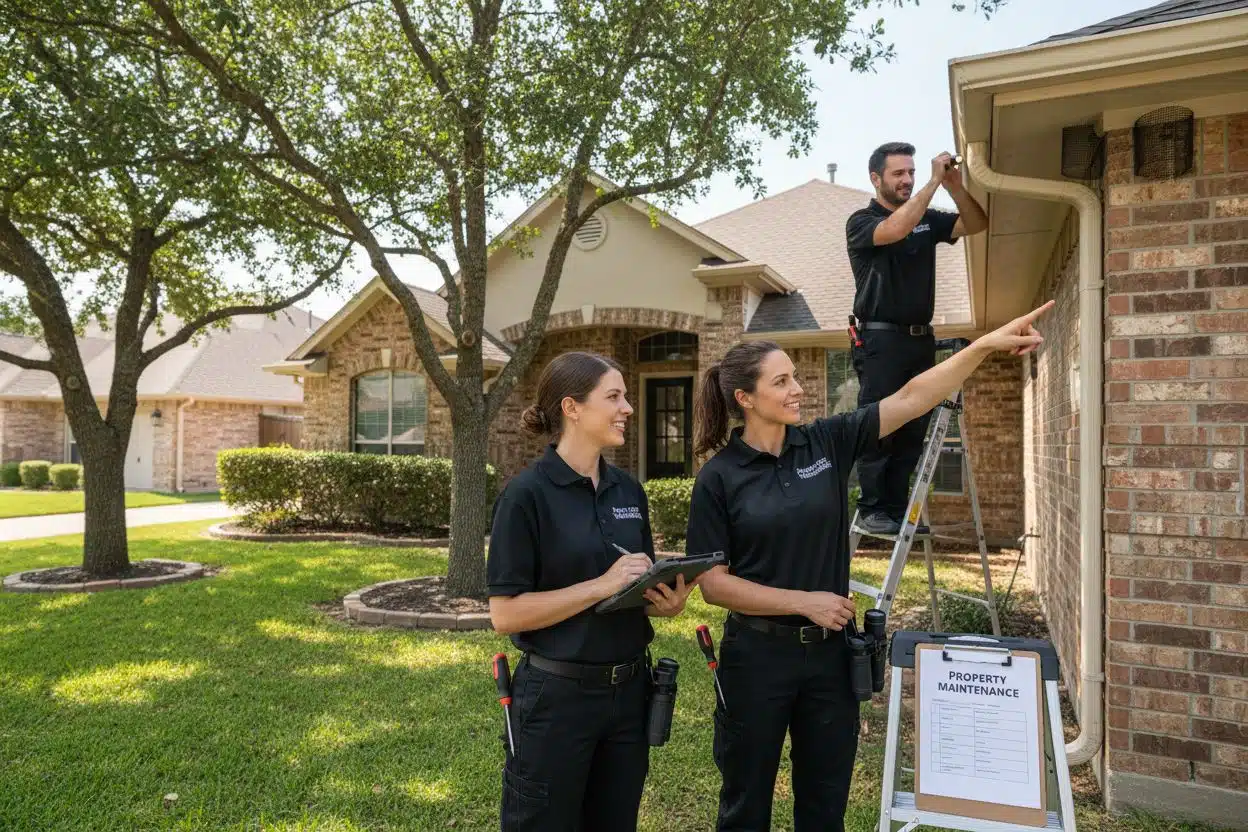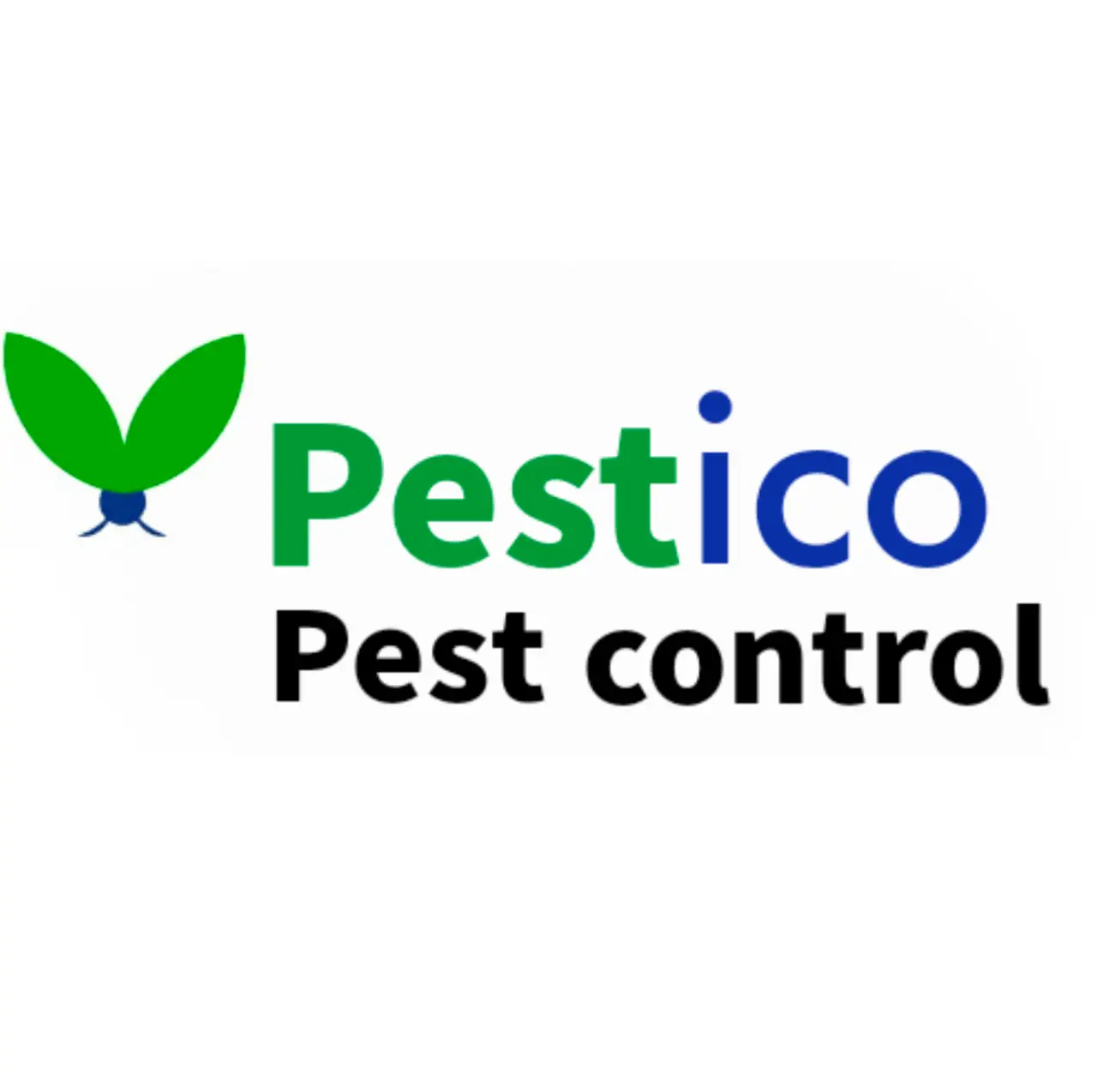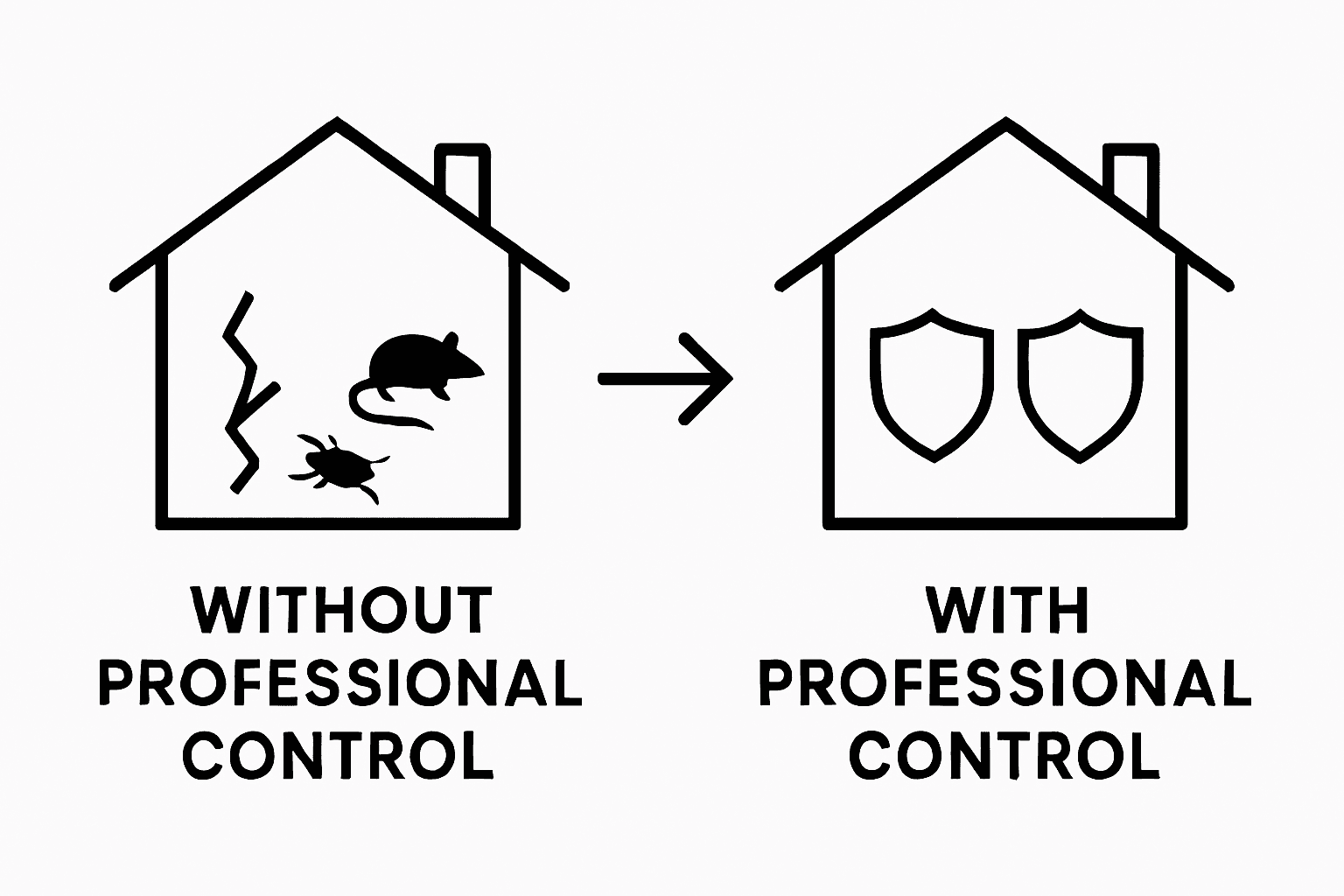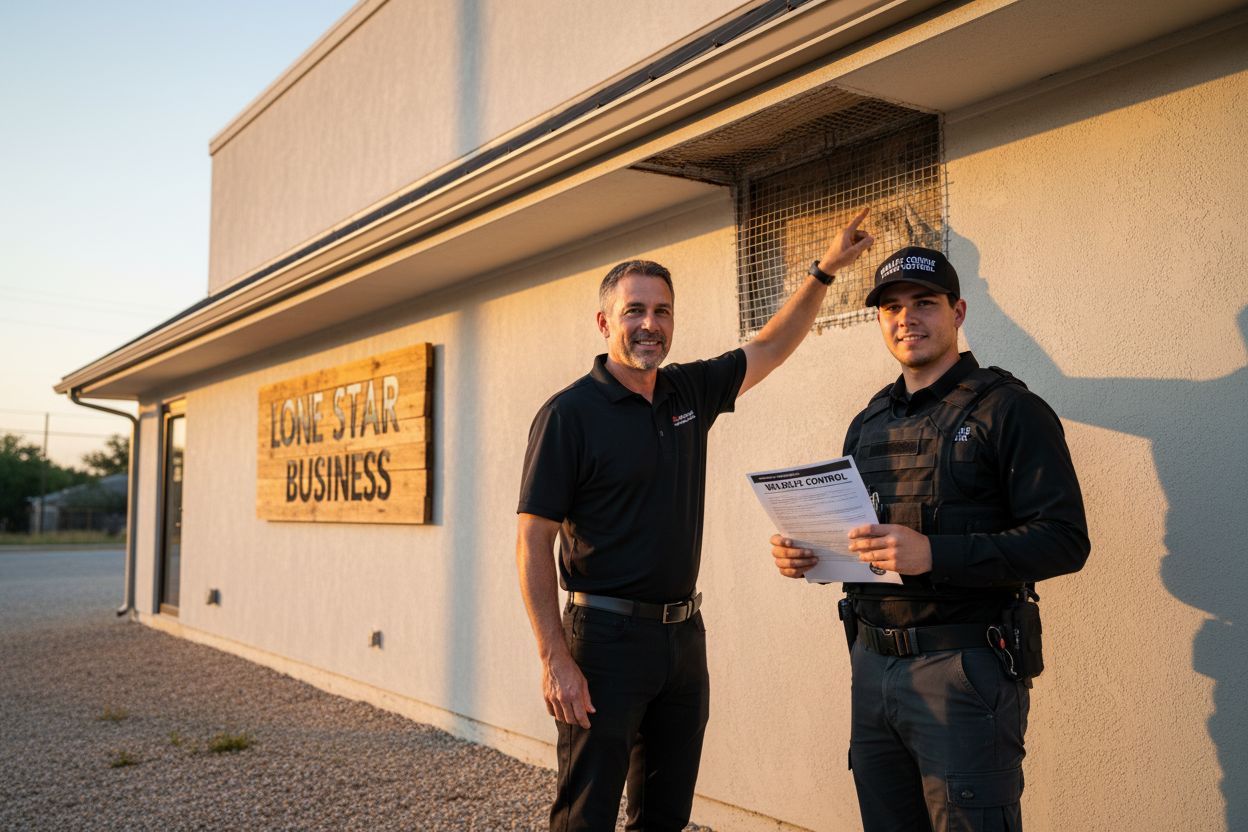Understanding Property Maintenance and Wildlife Control

Property maintenance usually brings to mind routine fixes and tidy lawns, but there is a surprising side that often gets ignored. Wildlife interactions cause not only sudden hassle but can also drain wallets through damage or even lower property values. In fact, proactive property maintenance can protect up to 10 percent of a property’s market value by stopping wildlife problems before they start. Most people focus on quick animal removal, yet the real power comes from the invisible strategies that blend building care with expert knowledge of animal behavior.
Table of Contents
- What Is Property Maintenance And Wildlife Control?
- Why Property Maintenance And Wildlife Control Matter In Texas
- How Property Maintenance And Wildlife Control Work Together
- Key Concepts In Property Maintenance And Wildlife Management
- Real-World Applications And Benefits For Homeowners And Businesses
Quick Summary
| Takeaway | Explanation |
|---|---|
| Implement regular property inspections. | Routine checks can identify vulnerabilities that attract wildlife before they escalate. |
| Use professional wildlife control services. | Experts provide targeted strategies that effectively manage animal behaviors and minimize risks. |
| Understand local wildlife dynamics. | Knowledge of regional animal patterns is crucial for effective prevention and management strategies. |
| Seal potential entry points. | Closing off access routes reduces the likelihood of wildlife entering structures. |
| Adopt preventive measures consistently. | Establish ongoing strategies that deter wildlife and protect property value over time. |
What is Property Maintenance and Wildlife Control?
Property maintenance and wildlife control represent specialized approaches to protecting residential and commercial spaces from potential damage and health risks associated with wildlife interactions. These integrated practices focus on preserving property integrity while ensuring safe, humane management of animal encounters.
Understanding the Core Concept
Property maintenance involves systematic strategies to prevent, identify, and address potential vulnerabilities that could attract wildlife or compromise structural safety. This comprehensive approach combines preventative measures, regular inspections, and targeted interventions to minimize risks. Wildlife control, specifically, involves carefully managing animal populations and behaviors to prevent property damage, protect human health, and maintain ecological balance.
Key aspects of property maintenance and wildlife control include:
- Identifying potential entry points for wildlife
- Assessing structural vulnerabilities
- Implementing humane deterrent strategies
- Conducting regular property inspections
The intersection of property maintenance and wildlife control requires a nuanced understanding of animal behavior, local ecosystem dynamics, and construction principles. Professionals in this field must balance human safety, property protection, and ecological considerations.
To clarify the distinctions and relationship between property maintenance and wildlife control highlighted in this section, the following table compares their core characteristics and approaches.
| Aspect | Property Maintenance | Wildlife Control |
|---|---|---|
| Main Focus | Preventing vulnerabilities, maintaining structure | Managing animal populations and behaviors |
| Methods Used | Regular inspections, repairs, sealing entry points | Humane removal, deterrents, monitoring |
| Expertise Required | Construction, structural assessments | Animal behavior, ecological understanding |
| Goal | Preserve property integrity and value | Protect health, prevent damage, maintain balance |
| Typical Interventions | Fix vulnerabilities, general upkeep | Targeted removal, species-specific strategies |
Importance of Professional Intervention
While some homeowners might attempt DIY solutions, professional wildlife control services offer specialized expertise that goes beyond basic removal. According to National Pest Management Association, professional wildlife control technicians understand complex animal behaviors and can implement targeted, environmentally responsible strategies that prevent future infestations.
Professional services provide comprehensive approaches that include:
- Detailed property risk assessments
- Species-specific removal techniques
- Long-term prevention strategies
- Minimal ecological disruption
By integrating expert pest control knowledge, property owners can effectively manage wildlife interactions while maintaining the safety and integrity of their spaces.
Why Property Maintenance and Wildlife Control Matter in Texas
In Texas, property maintenance and wildlife control are not merely optional services but critical strategies for protecting residential and commercial properties from unique environmental challenges. The state’s diverse ecosystems and varied wildlife populations create complex interaction scenarios that demand proactive management approaches.
Regional Wildlife Challenges
Texas presents distinctive wildlife management challenges due to its expansive geographic landscape and diverse animal populations. From urban areas in Dallas and Houston to rural regions surrounding smaller towns, property owners face potential interactions with raccoons, opossums, snakes, rodents, and various bird species that can cause significant structural damage.
Key wildlife challenges specific to Texas include:
- Rapid reproduction rates of local wildlife populations
- Seasonal migration patterns affecting animal behaviors
- Complex urban development intersecting natural habitats
- Climate variations promoting diverse animal adaptations
According to Texas Parks and Wildlife Department, understanding regional wildlife dynamics is fundamental to effective property protection strategies.
Economic and Health Implications
Wildlife encounters pose substantial economic risks beyond immediate property damage. Uncontrolled wildlife populations can compromise structural integrity, create health hazards, and potentially decrease property values. Research from Texas A&M AgriLife Extension indicates that unmanaged wildlife interactions can result in significant financial burdens for property owners.
Potential consequences of inadequate wildlife management include:
- Structural damage from nesting and burrowing
- Potential disease transmission
- Increased pest populations
- Reduced property aesthetic and market value
By implementing strategic home pest prevention strategies, Texas property owners can mitigate risks and protect their investments effectively.
The following table organizes the main wildlife-related economic and health risks outlined for Texas property owners, summarizing the consequences and their potential effects for easy scanning.
| Risk Type | Description | Potential Consequences |
|---|---|---|
| Structural Damage | Damage from nesting, burrowing, or entry attempts | Costly repairs, compromised integrity |
| Disease Transmission | Wildlife carrying pathogens or zoonotic diseases | Health hazards for humans and pets |
| Pest Infestations | Unchecked animals introducing secondary pests | Worsened infestations, harder eradication |
| Decreased Property Value | Visible or hidden damage lowering appeal | Reduced market value, difficult resale |
How Property Maintenance and Wildlife Control Work Together
Property maintenance and wildlife control represent a strategic partnership designed to protect residential and commercial spaces from potential animal-related damages. This collaborative approach integrates preventative techniques, structural assessments, and targeted interventions to create comprehensive protection strategies.
Integrated Prevention Strategies
Successful property maintenance and wildlife control requires a holistic approach that anticipates potential animal interactions before they become problematic. By combining structural integrity assessments with wildlife behavior understanding, professionals can develop proactive solutions that minimize risks and potential damages.
Key integrated prevention strategies include:
- Identifying and sealing potential wildlife entry points
- Assessing landscape design and vegetation management
- Understanding local wildlife migration and behavioral patterns
- Implementing environmentally responsible deterrent techniques
According to National Wildlife Control Operators Association, effective integration demands a multidisciplinary understanding of animal behavior, construction principles, and ecological dynamics.
Systematic Risk Management
The intersection of property maintenance and wildlife control involves a systematic approach to risk management. Professionals analyze potential vulnerabilities, assess species-specific behaviors, and develop targeted intervention strategies that protect both human environments and local wildlife ecosystems.
Comprehensive risk management components involve:
- Detailed property vulnerability assessments
- Species-specific behavioral analysis
- Customized intervention protocols
- Long-term monitoring and adaptation strategies
By adopting safest pest control methods, property owners can ensure effective wildlife management that balances human safety with ecological considerations.
Key Concepts in Property Maintenance and Wildlife Management
Property maintenance and wildlife management represent sophisticated disciplines that require comprehensive understanding of ecological interactions, structural vulnerabilities, and strategic intervention techniques. These interconnected fields demand nuanced approaches that balance human safety, property protection, and environmental preservation.
Ecological Understanding and Interaction Dynamics
Effective wildlife management begins with deep comprehension of local ecosystem complexities. Professionals must understand animal behavior patterns, habitat requirements, and potential interaction zones between human-constructed environments and natural wildlife territories. This knowledge enables precise, targeted strategies that minimize conflicts and promote coexistence.
Critical ecological considerations include:
- Species-specific behavioral patterns
- Seasonal migration and reproduction cycles
- Habitat fragmentation impacts
- Environmental adaptation mechanisms
Texas Parks and Wildlife Department emphasizes the importance of understanding regional wildlife dynamics as foundational to successful management strategies.
Preventative Intervention Principles
Preventative intervention represents a cornerstone of modern property maintenance and wildlife management. Instead of reactive approaches, professionals focus on creating comprehensive barriers and deterrent systems that proactively reduce potential wildlife interactions.
Key preventative intervention strategies encompass:
- Structural vulnerability assessments
- Environmental modification techniques
- Humane exclusion methods
- Continuous monitoring and adaptation protocols
By implementing comprehensive pest proofing strategies, property owners can significantly reduce potential wildlife intrusion risks while maintaining ecological balance.
Real-World Applications and Benefits for Homeowners and Businesses
Property maintenance and wildlife control strategies deliver tangible benefits that extend far beyond simple animal removal, providing comprehensive protection for residential and commercial properties. These specialized services offer critical safeguards that protect financial investments, ensure health safety, and maintain structural integrity.
Financial Protection and Property Value Preservation
Professional wildlife control and property maintenance directly impact property value by preventing structural damages that can significantly depreciate real estate investments. Unmanaged wildlife interactions can lead to extensive repair costs, compromising building foundations, electrical systems, insulation, and structural woodwork.
Financial risks mitigated through professional intervention include:
- Preventing expensive structural repair requirements
- Reducing potential insurance claim complications
- Protecting property market valuation
- Minimizing long-term maintenance expenditures
National Association of Realtors highlights that proactive property maintenance can preserve up to 10% of a property’s market value by preventing wildlife-related deterioration.
Health and Safety Considerations
Beyond financial implications, wildlife control and property maintenance play crucial roles in protecting human health. Wild animals can introduce significant health risks through disease transmission, contamination, and potential aggressive behaviors that threaten residential and commercial occupants.
Health protection strategies encompass:
- Preventing disease transmission from wildlife
- Reducing allergen and contamination risks
- Eliminating potential pathogen entry points
- Maintaining hygienic environmental conditions
By understanding the benefits of local pest services, property owners can implement comprehensive protection strategies that safeguard both human and structural well-being.
Take Control of Property Damage and Wildlife Risks—Protect What Matters Most
Managing property maintenance and wildlife control feels overwhelming when you are dealing with hidden entry points, unpredictable animal behavior, and the constant worry about property value and safety. Traditional DIY solutions often fail to address root causes and can leave you vulnerable to expensive repairs or future problems. You deserve expert help that actually prevents wildlife intrusion and keeps your home or business safe.
Experience peace of mind by letting a family-owned team safeguard your investment. Our specialists at Pestico know how to deliver lasting results through skilled property upkeep and wildlife management. Do not wait for the next animal encounter or costly repair. Get in touch today through our main site and discover why so many Texas property owners trust our affordable, high-quality service. Take the next step and protect what matters most—reach out now for a custom property assessment.
Frequently Asked Questions
What is the purpose of property maintenance in relation to wildlife control?
Property maintenance aims to protect residential and commercial spaces from potential wildlife damage by identifying vulnerabilities, preventing wildlife entry, and ensuring structural safety.
How do professionals assess the risk of wildlife interactions?
Professionals conduct detailed property inspections, identify potential entry points for wildlife, and evaluate species-specific behaviors to develop targeted prevention and intervention strategies.
What are some effective humane deterrent strategies for wildlife?
Effective humane deterrent strategies include sealing entry points, managing landscaping to reduce attractants, and using environmentally responsible methods like repellents or noise deterrents.
Why is professional wildlife control preferred over DIY methods?
Professional wildlife control offers expertise in understanding complex animal behaviors, ensuring that removal and prevention strategies are effective and environmentally responsible, minimizing risks to both humans and the ecosystem.
Recommended
- How To Handle Pest Complaints – Pest Control Van Alstyne, TX – Pestico Pest Control
- Local Pest Regulations – Pest Control Van Alstyne, TX – Pestico Pest Control
- Pest Control Regulations Texas 2025 – Pest Control Van Alstyne, TX – Pestico Pest Control
- Pest Proofing Outdoor Spaces: Essential 2025 Guide For Texas Homes – Pest Control Van Alstyne, TX – Pestico Pest Control
- Understanding Wildlife Friendly Fencing for Sustainable Land Use – FenceFast Ltd.



